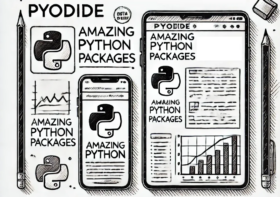Migrating to the Cloud: The Lift & Shift vs. Native Development Dilemma

Table of Contents
It’s the digital age. We are experiencing a rapid transformation – the digital revolution. Among the many innovations that have reshaped our world, one stands out like a towering colossus: migrating to the Cloud. Today, the sheer speed of cloud’s ascent has been nothing short of breathtaking. Yet, amidst this digital revolution, a fundamental dilemma has emerged for organizations of all sizes – the choice between ‘Lift & Shift’ and ‘Native Development’ when migrating applications to the cloud. This choice can be the difference between thriving in the cloud era or struggling to keep pace.
Cloud Migration Approaches and Dilemma
In the realm of cloud migration, there’s no universal solution. Instead, we encounter two distinct approaches, each possessing its own set of unique traits, benefits, and obstacles. Think of these approaches as divergent paths on your cloud migration journey, and the choice you make will profoundly influence the course of your expedition.
Lift & Shift (Rehosting)
Lift & Shift, also known as Rehosting, is an approach where you transfer your applications and data from on-premises servers to the cloud with minimal modifications. It involves replicating your existing environment in the cloud as closely as possible. Here are the key points on Lift & Shift.
- Minimal Code Changes: One of the primary features of Lift & Shift is that it requires minimal changes to your existing applications. You essentially replicate your infrastructure in the cloud environment.
- Speed of Migration: This approach is known for its speed; you can get your applications running in the cloud relatively quickly.
- Cost Savings: Lift & Shift can lead to short-term cost savings, as it doesn’t require a complete rewrite of applications.
- Suitable for Legacy Systems: It is often a preferred choice for organizations with legacy applications or time constraints.
Native Development
Native Development, on the other hand, involves rearchitecting and redesigning your applications to fully leverage the capabilities of the cloud. This approach is about building applications from the ground up, taking advantage of cloud-native services and technologies. Here are the key points on Native Development.
- Cloud-Native Design: Native Development focuses on designing applications specifically for the cloud environment. It involves leveraging cloud services like serverless computing, microservices, and containerization.
- Scalability and Innovation: This approach offers superior scalability and enables innovation by using cloud-native technologies. It can lead to long-term cost savings and enhanced performance.
- Customization: Native Development allows for customization and optimization of applications for the cloud environment.
- Suitable for Greenfield Projects: It is often chosen when starting new projects or for applications where a complete overhaul is warranted.
Choosing the Right Approach
When it comes to cloud migration, choosing the right approach is pivotal. It’s not a decision to be taken lightly but rather one that demands careful consideration of several critical factors.
The ultimate goal is to align the selected approach with business goals and available resources. The decision should be a strategic one that considers the unique needs and circumstances of an organization. By carefully weighing these critical factors, an organization can ensure that its cloud migration journey is not only successful but also a catalyst for future growth and innovation.
Legacy Systems vs. Greenfield Projects
The nature of applications plays a significant role. For legacy systems that are functional but need to transition to the cloud, Lift & Shift might be a more pragmatic choice. However, if an organization is initiating a new project or dealing with applications that require modernization, Native Development can be more beneficial.
Time Constraints
Timelines are often a critical factor. If a swift migration is necessary, the speed of Lift & Shift might be appealing. Conversely, Native Development may take longer due to its custom-built nature.
Budget and Cost Considerations
Budget is a vital factor. Lift & Shift typically involves fewer upfront costs, making it suitable for organizations with tight budgets. In contrast, Native Development may require more investment initially but could lead to long-term cost savings.
Scalability and Innovation Goals
Consider an organization’s growth plans and innovation objectives. If scalability and innovation are paramount, Native Development is better suited to achieving these goals.
Alignment with Business Goals
Perhaps the most critical factor is aligning the chosen approach with business objectives. Consider how each approach supports long-term strategies and competitiveness.
Skills and Resources
Evaluate the team’s expertise and available resources. Native Development demands a higher level of cloud expertise, whereas Lift & Shift can leverage existing skills.
Best Practices
Successful cloud migration is about more than just selecting the right approach; it’s about executing the migration in a way that maximizes benefits while minimizing risks. Here are some best practices that apply to cloud migration, regardless of whether you choose Lift & Shift or Native Development.
Comprehensive Planning
Start with a well-defined migration plan. Identify goals, establish timelines, and allocate resources efficiently. Ensure that stakeholders are aligned with the plan.
Risk Assessment
Thoroughly assess potential risks and develop mitigation strategies. This includes data security, compliance, and business continuity considerations.
Infrastructure Optimization
Optimize your existing infrastructure before migration. Eliminate redundancies, update software, and ensure efficient resource utilization.
Data Migration Strategy
Develop a clear data migration strategy, taking into account data volume, format, and security. Verify that data is consistent and accessible post-migration.
Testing and Validation
Rigorous testing is essential to identify and rectify issues before they impact operations. This includes performance testing, security testing, and functionality testing.
Monitoring and Optimization
Implement monitoring tools to track system performance post-migration. Continuously optimize your cloud resources for cost-efficiency and performance.
Security and Compliance
Prioritize security measures throughout the migration process. Ensure compliance with relevant regulations and standards.
Staff Training
Train your team on cloud technologies, best practices, and security measures. Foster a culture of cloud-awareness and continuous learning.
Documentation
Maintain comprehensive documentation of the entire migration process. This aids in issue resolution and post-migration troubleshooting.
Communication
Keep stakeholders informed throughout the migration journey. Clear communication helps manage expectations and mitigate disruptions.

Challenges and Risks
Both Lift & Shift and Native Development come with their own set of challenges and risks. Understanding these is essential for making informed decisions and preparing for a successful cloud migration.
Challenges and Risks of Lift & Shift
Compatibility Issues: Transferring legacy applications as-is may lead to compatibility problems with cloud infrastructure, potentially resulting in functionality issues.
Limited Cloud Optimization: Lift & Shift may not fully leverage cloud-native features, leading to missed opportunities for cost savings and performance improvements.
Data Transfer Complexity: Large-scale data transfers can be complex and time-consuming, impacting migration timelines.
Mitigation Strategies for Lift & Shift:
- Conduct a comprehensive application inventory and assessment to identify compatibility issues beforehand.
- Invest in cloud optimization post-migration to take full advantage of cloud capabilities.
- Use data transfer solutions optimized for large-scale transfers to minimize downtime and data integrity risks.
Challenges and Risks of Native Development
Resource and Expertise Demands: Native Development requires specialized cloud expertise, which might not be readily available within the organization.
Extended Timelines: Building applications from scratch or significantly redesigning them can extend migration timelines, delaying benefits.
Initial Investment: Native Development may require a larger initial investment due to custom development efforts.
Mitigation Strategies for Native Development:
- Invest in cloud training for existing staff or consider hiring cloud experts.
- Carefully plan timelines and resources to avoid unnecessary delays.
- Analyze the long-term cost benefits to justify the initial investment.
Takeaways
Cloud migration is not just a trend but an imperative for businesses seeking competitiveness, agility, and efficiency. The cloud has revolutionized the way organizations operate, collaborate, and innovate, offering an array of services and capabilities that have transformed the business landscape.
The central challenge, as has been explored, is deciding which migration approach aligns best with an organization’s goals, resources, and constraints. The choice between Lift & Shift and Native Development is akin to selecting the right vessel for the journey to the cloud. Each has its own merits and pitfalls, and the path chosen can significantly impact the migration journey.
Lift & Shift, with its speed and simplicity, is an option for organizations aiming for a quick transition. It’s akin to boarding a direct flight to the cloud, allowing the migration of existing applications with minimal disruption. However, it may not unlock the full potential of the cloud, and long-term cost and performance considerations should not be overlooked.
On the other hand, Native Development is the more scenic route, offering the promise of superior scalability and innovation. It’s like building a custom ship, designed to harness the full power of the cloud’s capabilities. This approach requires more investment and time, but it often yields greater long-term benefits in terms of cost savings, performance, and competitiveness.
Regardless of the choice made, one thing is clear: a successful cloud migration project demands meticulous planning, rigorous testing, and ongoing optimization. The best practices discussed today, including risk assessment, infrastructure optimization, and monitoring, apply universally and are essential for a smooth transition.
The cloud migration journey is a dynamic and evolving endeavor. It’s vital to continuously assess and adjust the approach as business needs and the cloud landscape evolve. Embrace the flexibility and innovation that the cloud offers, and adapt strategies to reap the full benefits of the migration.
Ultimately, the path to the cloud may be fraught with decisions, but with careful planning, informed choices, and a focus on aligning the approach with organizational goals, the journey can be made not just successful but transformative for the business. The clouds beckon, and the voyage awaits. Bon voyage!
Your interest lies in cloud migration strategies, and I have also authored an article titled “A Strategic Choice: Cloud Smart vs. Cloud First“.




Leave a Reply